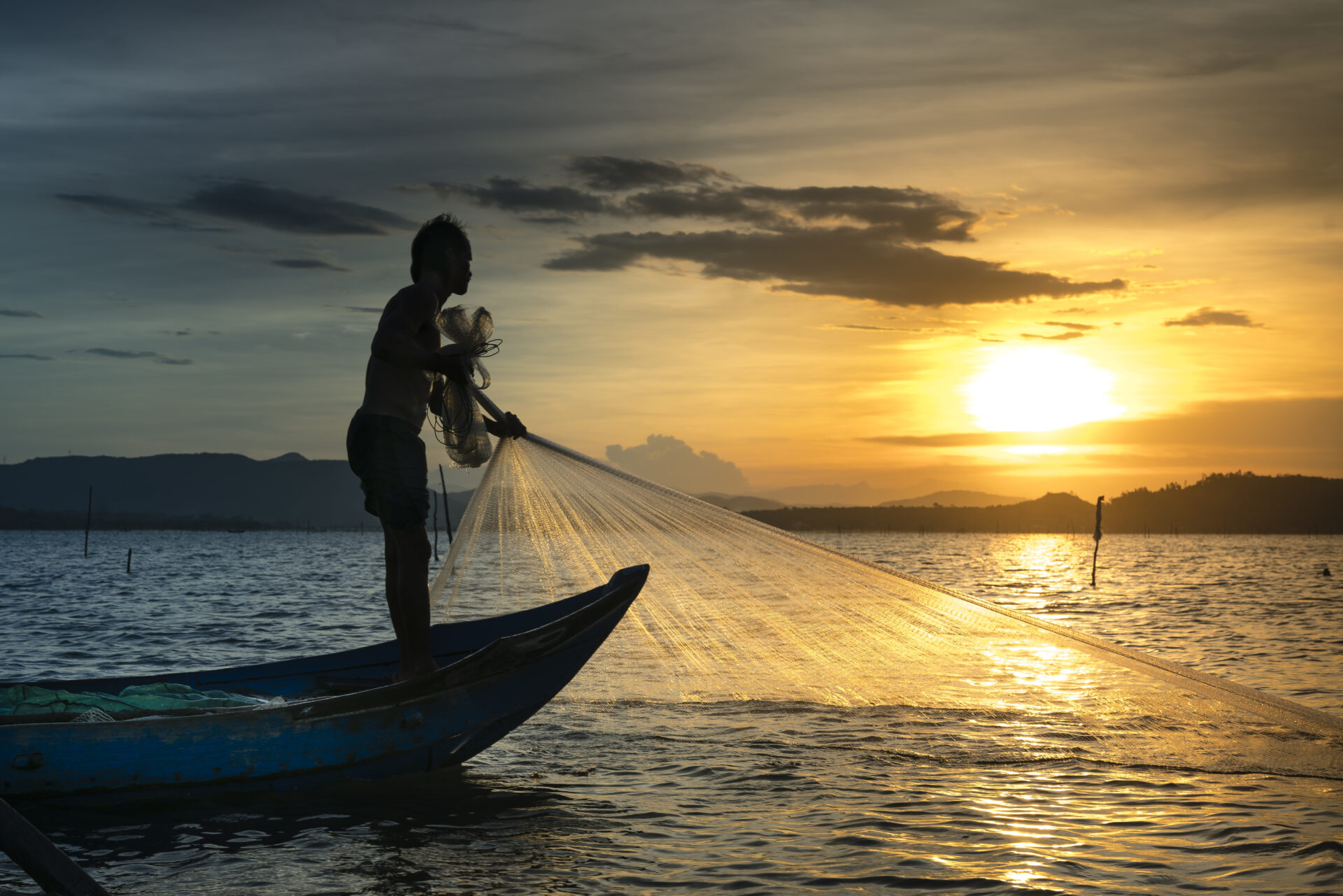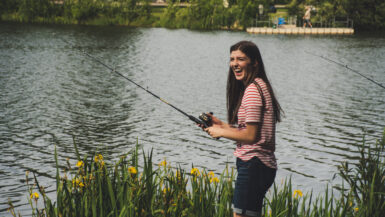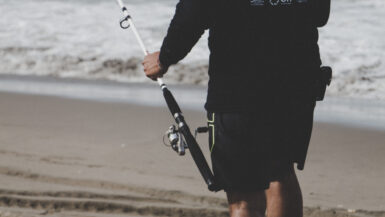Fly fishing is an ancient art form that has been around for centuries and is still widely practiced today. It is a great way to experience nature and enjoy some peace and quiet on a day out in the open air. Fly fishing for trout in a freshwater environment can be a great way to test your skill and connection with the outdoors. Whether you are a complete beginner or an experienced angler, these tips on fly fishing for trout in freshwater will give you the skill and confidence to cast a line out and catch a trout.
Essential Equipment for Fly Fishing
If you’re a beginner fly fisher, using the right tackle, tools and equipment is essential for catching fish. Fly fishing for trout can be a rewarding and challenging experience, and having the right gear will help make it all the more enjoyable.
Fly Reel
The reel is the foundation of fly fishing, so it’s important to choose the correct type for the type of water you’ll be fishing in. Generally, trout are caught in much slower moving water and at lower depths than other species. With this in mind, it’s best to opt for a reel with a medium to large arbor design and few to no intricate features. A reel with an adjustable drag system offers more flexibility and is ideal for fighting larger trouts.
Fly Line
When selecting a fly line, you’ll need to choose one which is suited to the type of water you’re fishing in. Generally, it’s best to opt for a line that’s accurate, easy to cast, and offers low memory. If you’ll be fishing in deeper waters or in areas with strong currents, a sinking fly line is recommended.
Fly Rod
An important piece of equipment for successful trout fishing is the fly rod. To ensure it’s easy to cast and effective at presenting the flies, you’ll need to choose the rod that best suits the type of water you’ll be fishing in. Generally, a medium to fast action rod is ideal for most trout fishing, as it allows for quicker loading and easier casting.
Fly Box
The fly box is another essential piece of equipment for successful trout fishing. It’s important to select a fly box that’s designed for the type of fly fishing you’ll be doing. If you’re fishing smaller flies, a smaller box is necessary, while larger boxes are ideal for larger flies. Additionally, it’s best to opt for a box that is waterproof and can be easily carried.
Leader & Tippet
Having the correct leader and tippet is also essential for successful trout fishing. When selecting a leader and tippet, you’ll need to take into consideration the type of water you’ll be fishing in, as well as the size of the flies you’ll be using. Generally, trout are caught in much slower moving water, so you’ll need to choose a leader and tippet that is suitable for these conditions.
Fly Patterns
Finally, you’ll need to select the right flies for the type of trout fishing you’re doing. You’ll need to choose flies that are suited to the type of water, as well as the season. Trout generally feed on a variety of insects, so having a selection of dry flies, nymphs, and streamers is essential for success. Additionally, it’s important to carry some backup flies in case your initial selection does not seem to be working.
Equipping yourself with the right type of tackle, tools, and equipment is essential for successful fly fishing for trout. To ensure the best possible fishing experience, it’s important to select the appropriate gear for the type of water you’ll be fishing in. With this in mind, you’ll be sure to have a successful and enjoyable time out on the water.
Setting Up the Rod and Reel
Fly fishing requires specific pieces of equipment in order to be successful. Assembling the perfect fly fishing rod and reel is a great place to start. For trout fishing, a 7 to 9 foot rod with a medium to fast action is the best option. This will allow you to cast further and more accurately while giving you the power to fight a good sized trout. The reel should be a reliable, mid-priced model with a good drag system and plenty of backing capacity.
Choosing Fly Fishing Line
Your choice of fly fishing line influences your accuracy and casting distance, so being able to choose the right line for the job is important. A weight forward floating line is the best choice for most trout fishing situations. Weight forward lines provide a bit more casting distance and accuracy than double taper lines. You should also consider the size of the line when choosing. A line that is too small will not be able to turn over the fly, while a line that is too heavy will prevent you from casting far.
Connecting Line to Reel
Connecting the fly line to the reel is a crucial step in the fly fishing setup. First, you’ll need to attach the backing to the reel. This should be done by looping the backing through the reel and tying a double surgeon’s knot. Once the backing is attached, you’ll need to connect the line to the backing. This is done by tying a nail knot. When tying the nail knot, make sure to leave enough space to attach the leader later.
Attaching the Leader
The leader is the final piece of the fly fishing setup. It is the thin, monofilament line that connects the fly to the backing. Leaders come in a variety of lengths and strengths, so it’s important to choose the one that is best suited for the type of fishing you are doing. A 9 foot leader is a good starting point for trout fishing. Once the leader is chosen, it can be attached to the backing using a double surgeon’s knot.
Adding the Fly
The last step in setting up the rod and reel is to add the fly. Trout flies come in a variety of sizes and styles, so it’s important to choose the right fly for the job. Dry flies and nymphs are the two most common types of flies used for trout fishing. Once you have chosen the right fly, tie it to the end of the leader using a clinch knot.
By following these steps, you can have your fly fishing rod and reel setup in no time and be ready to hit the water in search of trout. With proper knowledge and practice, you can become an excellent fly fisherman and master the art of catching trout in freshwater.
Selecting Appropriate Flies
Fly fishing for trout can be a rewarding experience, but it’s important to familiarize yourself with the various types of flies that are used in order to maximize your chances of success. Different types of trout flies are designed to imitate the natural food that trout eat. Some of the most common types of trout flies include nymphs, wet flies, streamers, and dry flies. Nymphs are designed to sink below the surface and imitate aquatic insects, whereas wet flies resemble aquatic insects or baitfish just below the surface of the water. Streamers are used to imitate small baitfish, while dry flies are designed to float on top of the water and imitate emerging insects.
Choose the Right Trout Fly for Your Situation
When selecting a fly for trout fishing, it’s important to consider the current conditions. The type of fly you choose should be based on the type of trout you are targeting, the size of the trout, the water temperature, and the time of year. For example, if you’re fishing for larger trout, you may want to use a larger, heavier fly that can reach deeper into the water column. If you’re fishing in warmer water, you may want to use a lighter, more buoyant fly that can hover in the water column. Lastly, if you’re fishing at a certain time of year, you may want to use a fly pattern that matches the natural insects that are hatching at that time.
Vary Your Fly Fishing Strategies
When fly fishing for trout, it’s important to vary your strategies. Different types of trout behave differently, and they can be attracted to different types of flies. For example, if you’re trying to catch a large brown trout, you may want to try a streamer pattern. On the other hand, if you’re looking to target a brook trout, you may want to use a dry fly or nymph pattern. In addition, it’s important to vary your presentation. Some trout may be attracted to an aggressive fly-striking approach, while others may be more apt to take a slower, more subtle presentation.
Test Different Trout Flies to Find What Works
When selecting flies for trout fishing, it’s important to experiment with different types of flies to see what the trout are responding to. It’s also a good idea to talk to experienced fly fishers in your area to get some insight into the type of flies that are working best. By experimenting with different flies and presentations, you can gain a better understanding of how to effectively target trout and successfully catch them.
Finding the Right Spot
When it comes to fly fishing for trout in freshwater, the most important step is finding the right spot. To find the right environment for catching trout, you’ll need to identify the type of habitat in which they thrive. Trout generally prefer cold, clear, oxygen-rich waters, so look for areas where the water is moving steadily, such as the edges of a lake or river, springs, and streams. Check for signs of trout activity- look for areas of foam in the water, as well as for any insects or other food sources the trout might be feeding on.
Considerations for Picking Your Perfect Spot
Once you’ve identified an area that might be suitable for trout fishing, there are a few more considerations. Make sure to choose a spot that is easily accessible- this will make it much easier to get to your fishing spot and transport your gear. Also, make sure to pay attention to the current wind direction, as this can affect how effectively you can cast your line. Finally, it’s important to assess the depth of the waters, as this will give you an idea of the type and size of trout you may find.
Honing Your Approach
Though finding a suitable spot is key, it’s also important to hone your approach once you’re there. Although trout can be caught with bait and lures, fly fishing techniques give you an opportunity to target specific species. Be sure to research and practice different casting techniques, as well as what type of flies are best for certain species and the conditions of the water. Read up on trout behavior and the proper techniques for playing and landing them, as this will give you an edge in the field. Having the right gear and understanding the best approach will help ensure success during your fishing adventure.
Using the Right Tactic
Fly fishing is a great way to catch trout in freshwater. It requires a certain degree of skill and technique, however, to have success. To have the best chances of catching trout with fly fishing, it’s important to use the right tactics. Here are a few tips to help you get started.
Know Your Trout Species
Before beginning your fly fishing adventure, it’s important to understand the species of trout you’ll be targeting. Different species of trout will feed on different types of insects, so it’s important to research the specific species of trout in the area and choose the right type of fly.
Be Selective in Choosing Fishing Gear
In fly fishing, having the right gear is essential. Choose a rod that is lightweight yet strong, as well as a reel that is resistant to corrosion. You should also pick the right type of line. Generally, a weight-forward floating line is best for trout fishing. Finally, choose a leader, tippet and fly that match the target species.
Select the Right Time and Place
To maximize your chances of catching trout, it’s important to select the right time and place to fish. Generally, the best times to fish for trout are early morning, late evening and during overcast conditions. As far as the location, trout typically inhabit shallow, slow-moving streams and ponds, so those are the types of places to target.
Use the Correct Casting Techniques
Fly fishing requires a different style of casting than spinning or baitcasting. Start by practicing your casting technique on land with a rubber fly to ensure accuracy before you head out on the water. Once you’re on the water, intermediate and advanced casters should use roll casting, while beginners should practice basic overhead casting.
Choose the Right Fly
The type of fly you use can make a huge difference when fly fishing for trout. For example, if you’re targeting brown trout, use a dry fly or wet fly that imitates their natural food sources, such as ants, beetles or mayflies. This can be the difference between catching trout or just casting a line all day.
Vary Your Retrieve
When fly fishing for trout, it’s important to vary your retrieve. You’ll want to experiment with different speeds and techniques to see what the trout respond to. This can be as simple as a few short jerks followed by long pauses, or as complex as a figure-eight retieve.
Fish for Trout with Patience
Fly fishing for trout is an art that takes time and patience to master. It’s important to practice and experiment with different techniques to find out what works best for the current conditions. With time and effort, you can perfect the art of fly fishing for trout in freshwater.
Keeping Trout Fresh Once Caught
Fly fishing for trout is a popular sport, and with the right techniques, anglers can catch plenty of trout. After catching a trout, it is important to keep it as fresh as possible until it is ready to be cooked. Here are some tips for keeping your trout fresh after a successful fishing trip.
Properly Store Trout Immediately
Immediately after you catch a trout, it is important to store it properly. Use a cooler full of ice or an insulated bag or box with plenty of ice packs to keep the fish cold. Make sure the trout is stored separately from other foods and beverages to avoid contaminating the fish with odors or flavors.
Prevent Scorching of Trout
To prevent the trout from getting too hot, keep it out of direct sunlight as much as possible. Anglers can also use a wet towel or an insulated bag to keep the trout cool while fishing. Additionally, it is a good idea to bring a few extra ice packs while fishing in case the ice melts and needs to be replaced during the excursion.
Clean Trout Immediately
It is important to clean the trout as soon as possible, but make sure to store it in an ice-cold environment until it is cleaned. This will prevent any bacteria from forming on the fish. After cleaning the trout, make sure to refrigerate it as soon as possible.
Store Trout in Different Environments
Store the trout in different environments depending on how soon it will be cooked. If the fish will be cooked within a few days, then store it in the refrigerator. If the fish will be cooked in a few weeks or months, then it is best to freeze it. Make sure the fish is properly wrapped in freezer-safe plastic or aluminum foil before freezing.
With the right steps, anglers can preserve the taste and freshness of the trout they caught. Keeping the trout cold, clean, and in the right environment is the best way to ensure the fish is fresh and safe to eat.
Conclusion: The Joy of Fly Fishing
Fly fishing is a skill and art that has been practiced for centuries, and continues to provide a wonderful way to enjoy the outdoors. It’s important to understand the basics of fly fishing, in order to have a successful outing. Utilizing the tips in this article, trout can be caught and enjoyed in freshwater, providing an enjoyable and pleasant fishing experience. Fly fishing is an exercise in patience and diligence, with great rewards for the fisherman. The joy of seeing a trout break the surface or feel a tug on your line are moments that make the effort worthwhile. Fly fishing is an activity that will be enjoyed for many generations to come.





Leave a reply